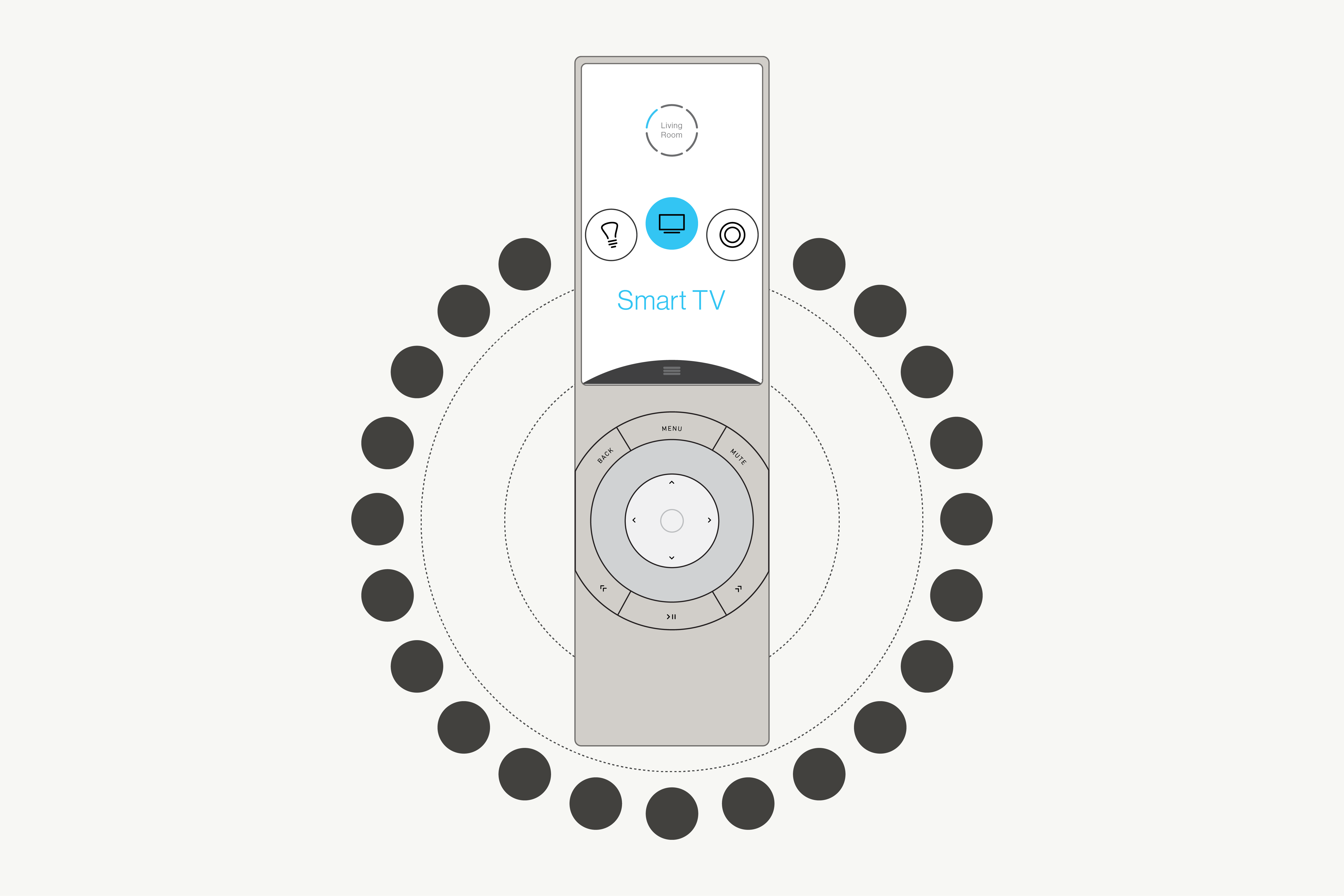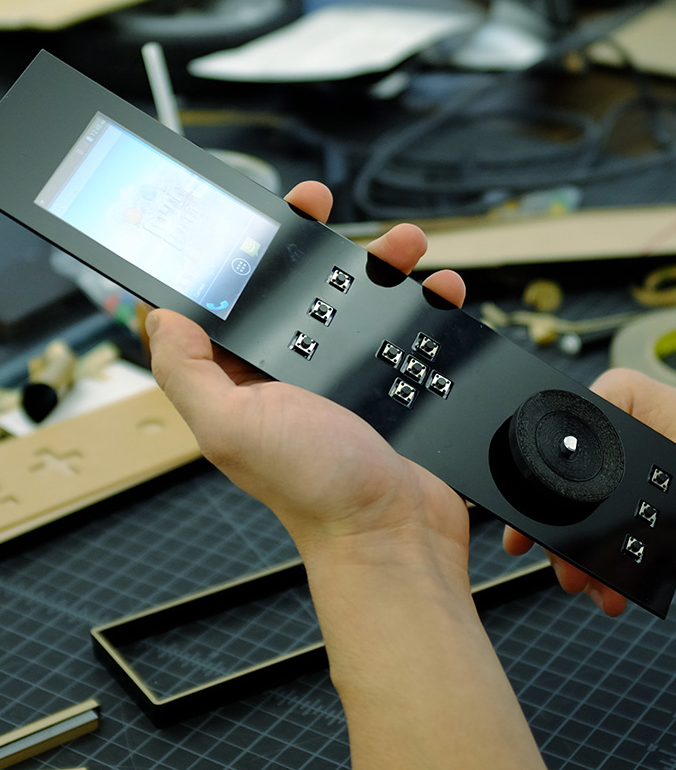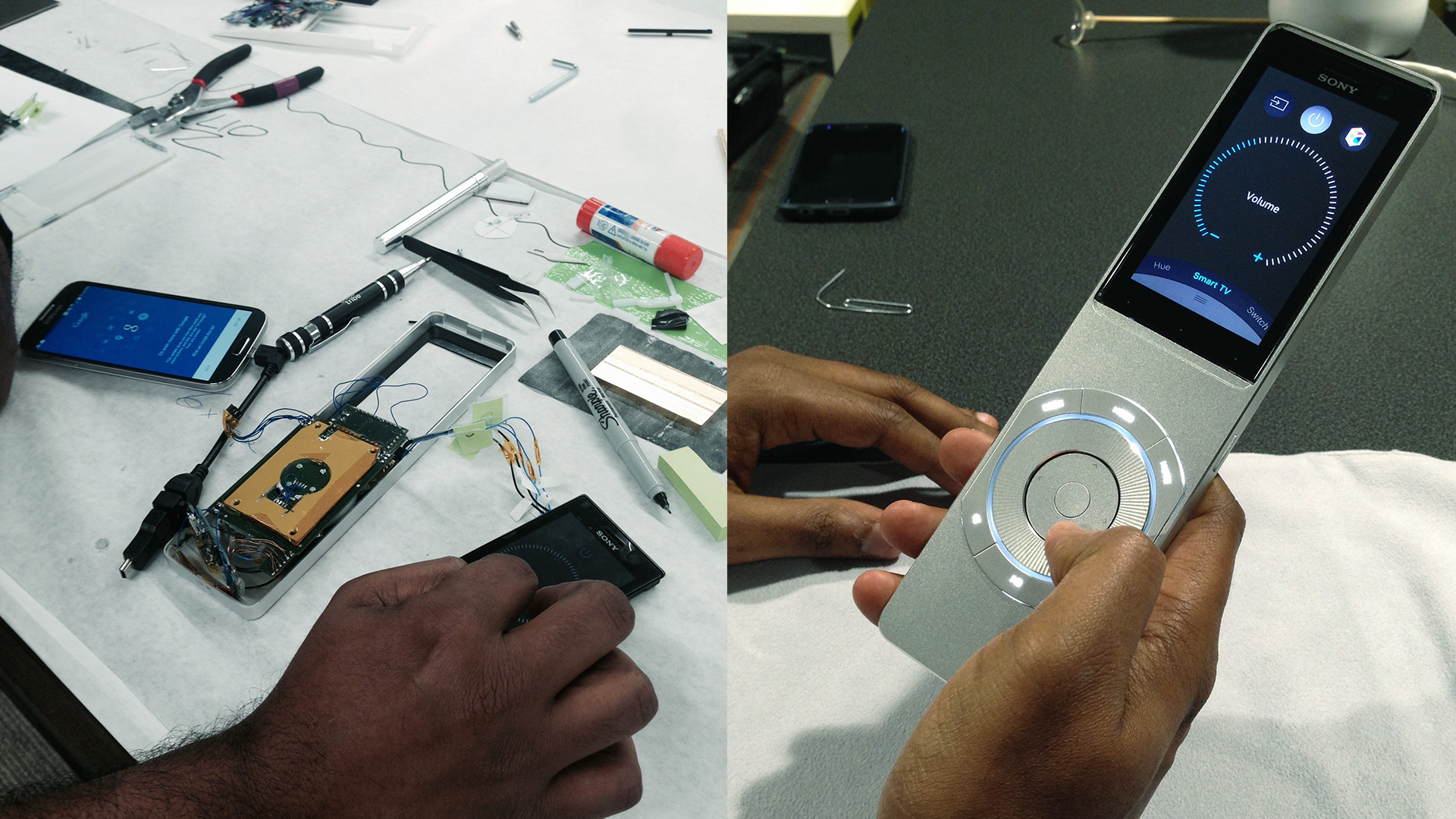
Samsung Clio
There's a big problem with the exponential growth of connected devices around our homes; the abundance of remotes and apps to control things. Samsung had been trying to tackle this problem with Smart TV being the hub of the house. But consumers kept turning to smart phone apps to control their devices. So I was assigned to explore the potential of a new kind of wireless networked remote - a control device that mashes up smart phone scalability with hardware remote simplicity. It needed to have a universal interface experience, a streamlined set of key button functions, voice commands, and have the ability to control just about anything that could be remotely controlled.
Approach
- Immersion with smart home devices and apps to identify key patterns.
- Rapid prototyping beginning with a touch app, then scale to hardware.
- Build off interaction patterns and technologies developed from the Tune project.
- Explore forms and textures that provide a pleasant emotional response - something hard to put down.

Description of the image above
Measures of Success
- Executive adoption. That's it... win or lose at the opinion of CEO BK Yoon.
Solutions
01
The Solar System UI model plays off Samsung's "Galaxy" brand. In the center are the key physical controls, which are carried deeper by a touch screen. Outer rings can scale indefinitely, providing a near infinite list of devices. A wayfinder at the top provides for narrowing down scope if this were to ever get out of hand. But this concept is primarily concerned with the average home, which has about 40 devices.



At the device level - a planet in the solar system - are controls for the core features of most smart home products.
02
Prototyping Clios came in multiple distinct paths - industrial, mechanical and technical. Discovering a form and material that felt good in the hand and a layout that didn't stress the thumb took quite a lot of time and exploration. It was a pleasure to mentor a new industrial designer named Anthony Reyes through this process.


As industrial design was ongoing, functional prototyping continued at a much more primitive level. Eventually, we 3D printed smaller versions of the Tune wheel and gave it a shot. It was very well received by everyone who tried it out.


Industrial design shaped up about the same time we got the software working.
The working demo prototype had to be about 30% larger than the intended design due to challenges with electrical components. But ultimately, anodized aluminum and a soft touch rubber backing felt really good and I was stoked by the result.
03
With functional software shaping up, I partnered with visual designer Kenny Chui to polish up a kit of unique but generic interfaces to work across a multitude of brands of smart devices for homes.

04
Accomplishing the mission - executive adoption - was achieved, but met with another challenge. Do it again, but smaller, cheaper, and with a deadline of 30 days. This really meant locking down an industrial design in 3 days that mechanical and electrical teams would commit to. Drawing on existing experiences and concepts, we locked down an idea that used a smaller, round screen and a touch strip instead of mechanical wheel.
“I love this. Can you make something like this smaller and cheaper that could ship with Smart TVs?”
BK Yoon
CEO
Samsung


Luckily, the software didn't require too much change, and we were able to hack an existing TV remote rather than require a new circuit design. The time blew by like a blur, and I can't honestly believe we did it. But we rocked this thing out.
Outcomes
Samsung CEO BK Yoon visited us shortly after to check on our progress. True story - we were so tired, we forgot to charge the battery and the remote was dead when he first came by! But it all worked out in the end. Clio's design studies and technologies influenced the development of the Samsung One, which is touted in the media as the "Remote to Rule Them All." The product teams still returned to using the Smart TV as a hub so they could ditch the screen, but the patterns are still there and enabling even further evolution of this concept.
